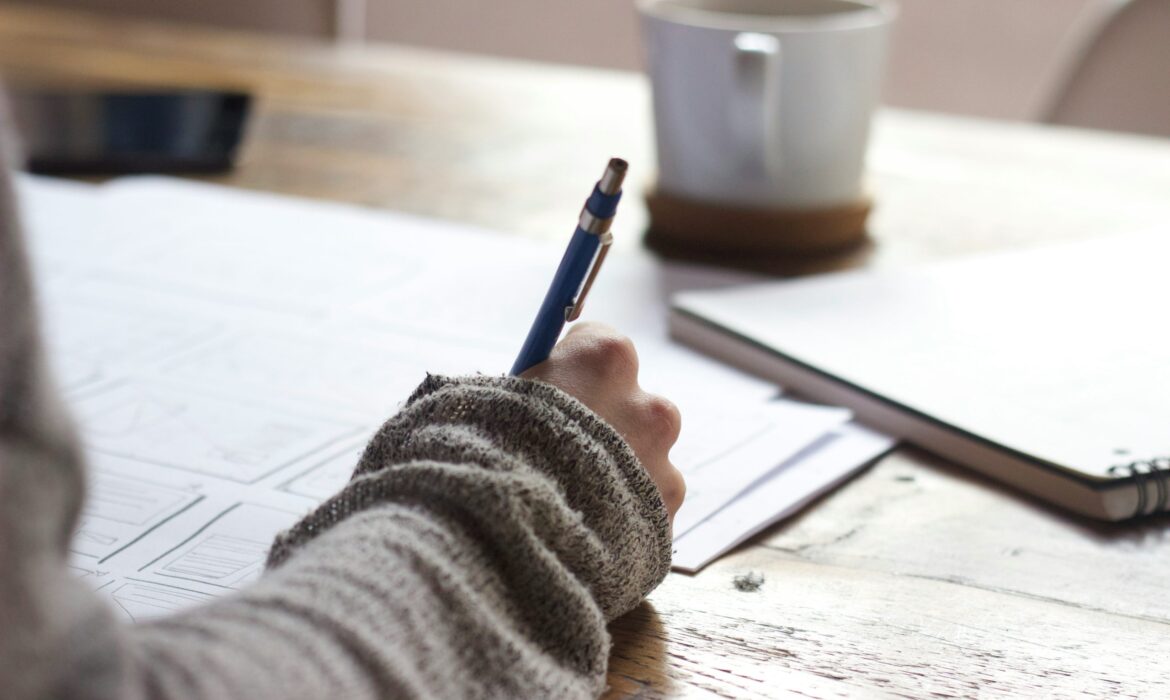SaaS Pricing Strategies: Choosing the Right Model for Your Business
In the competitive world of SaaS, pricing serves as the delicate bridge between acquiring customers and maintaining a healthy bottom line. Choosing the right pricing strategy isn’t just about picking a random dollar figure; it’s a thoughtful dance between value perception, customer psychology, and sustainable business growth.
This guide delves into the various SaaS pricing models, offering key considerations and examples to help you select the approach that best aligns with your business goals and resonates with your target audience.
Understanding your Value Proposition:
Before diving into specific models, it’s crucial to have a crystal-clear understanding of your unique value proposition. What specific pain points does your SaaS solve? What measurable benefits does it deliver to customers? What sets you apart from competitors? Answering these questions forms the foundation upon which you build your pricing strategy.
Popular SaaS Pricing Models:
Now, let’s explore some of the most common SaaS pricing models and their nuances:
Flat-Rate Pricing:
- Concept: Customers pay a fixed monthly fee regardless of usage.
- Considerations: Simple to understand, easy to manage, potentially good for attracting budget-conscious users. However, it can undervalue your product for high-engagement users and might not capture the full value you offer.
- Examples: Spotify, Mailchimp (basic plan).

Tiered Pricing:
- Concept: Offer multiple plans with varying feature sets and price points.
- Considerations: Caters to diverse customer needs and budgets, promotes upselling and cross-selling. Requires careful design to avoid feature overlap and ensure clear distinctions between tiers.
- Examples: Dropbox, HubSpot, Zoom.
Per-User Pricing:
- Concept: Charge based on the number of users accessing your platform.
- Considerations: Scales well with team sizes, aligns with value delivered per user. Can be complex to manage for large organizations and might feel unfair to smaller teams with infrequent usage.
- Examples: Slack, Asana, Jira.
Usage-Based Pricing:
- Concept: Charge based on specific metrics like storage space, API calls, or transactions.
- Considerations: Encourages efficient usage, promotes pay-as-you-go flexibility. Can be unpredictable for customers and complex to implement technically.
- Examples: AWS, Twilio, SendGrid.
Freemium Model:
- Concept: Offer a free basic version with limited features alongside premium paid plans.
- Considerations: Attracts a large user base, reduces barriers to entry, provides a testing ground for potential paying customers. Can be challenging to convert free users and ensure profitability.
- Examples: Canva, Evernote, Dropbox (limited storage).

Choosing the Right Model:
Selecting the optimal pricing model isn’t a one-size-fits-all equation. Consider these factors to make an informed decision:
- Target Audience: Who are you selling to? What are their pain points and budget constraints?
- Value Proposition: How much value does your SaaS deliver compared to alternatives?
- Cost Structure: Understand your fixed and variable costs to ensure pricing covers expenses and generates profit.
- Competitor Analysis: Research how your competitors price their products.
- Business Goals: Are you prioritizing customer acquisition, user engagement, or maximizing revenue?
Beyond the Model:
Remember, your pricing strategy extends beyond choosing a model. Consider these additional elements for success:
- Psychological Pricing: Utilize strategies like charm pricing (e.g., $9.99) and free trials to influence perception.
- Clear Communication: Communicate your pricing plans transparently, highlighting the value each tier offers.
- Flexibility: Consider offering annual subscriptions, discounts for longer commitments, and upgrade/downgrade options.
- Data-Driven Decisions: A/B test different pricing structures and analyze customer behavior to optimize your approach.
Conclusion:
Developing a winning SaaS pricing strategy requires careful consideration of your value proposition, target audience, and business goals. By understanding the popular models, their pros and cons, and additional strategic elements, you can equip your business with a pricing approach that drives customer acquisition, fosters engagement, and secures long-term financial success. Remember, pricing is an ongoing journey, not a one-time destination. Adapt your strategy based on market trends, customer feedback, and business evolution to ensure your SaaS thrives in the dynamic landscape.
Building a Winning SaaS Marketing Strategy: Attracting and Converting Customers
In the fiercely competitive world of Software-as-a-Service (SaaS), standing out and attracting customers requires a well-crafted and data-driven marketing strategy. This strategy should focus not just on acquiring new users, but also on nurturing them into loyal brand advocates. This guide will equip you with the essential steps and key tactics to build a winning SaaS marketing strategy that attracts, engages, and converts customers.
Deep Dive into Your Audience:
Before launching any marketing campaigns, understanding your target audience is crucial. This involves creating detailed buyer personas that capture their demographics, pain points, goals, and online behavior. Conduct market research, surveys, and competitor analysis to identify your ideal customer profile. The more specific you are, the more targeted and effective your marketing efforts will be.
Define Your Value Proposition:
What makes your SaaS solution unique and valuable? Clearly articulate your value proposition in a concise and compelling way. Highlight how your product solves specific problems your target audience faces and quantifiable benefits they can expect. Remember, value proposition isn’t just about features; it’s about the impact your product creates.
Content is King (and Queen):
High-quality content is the cornerstone of any successful SaaS marketing strategy. Create informative and engaging content that educates your audience, addresses their pain points, and showcases the value your product offers. Utilize various content formats like blog posts, articles, white papers, webinars, infographics, and video testimonials. Optimize your content for search engines (SEO) to increase organic reach and ensure it’s easily discoverable by potential customers.

Leverage the Power of Paid Advertising:
While organic reach is valuable, paid advertising platforms like Google Ads and social media advertising can amplify your reach and target specific demographics and interests. Experiment with different ad formats, track their performance, and optimize your campaigns for maximum return on investment (ROI).
Social Media Engagement is Key:
Build an active presence on relevant social media platforms where your target audience is active. Share valuable content, engage in conversations, participate in industry discussions, and run targeted social media campaigns. Partner with relevant influencers who resonate with your audience and can share your message authentically.
Email Marketing: A Personalized Touch:
Email marketing remains a powerful tool for fostering relationships and nurturing leads. Segment your email list based on user behavior and interests to deliver personalized and relevant messages. Offer valuable content, nurture leads through email drip campaigns, and promote special offers and free trials.
Free Trials and Demos:
Allow potential customers to experience the value of your product firsthand through free trials or demos. Make the signup process smooth and provide clear instructions to showcase the core features and benefits. Offer different trial options to cater to diverse needs and preferences.
Showcase Customer Success:
Testimonials, case studies, and user success stories are powerful social proof that demonstrate the positive impact your product has on real customers. Feature these prominently on your website, marketing materials, and social media to build trust and credibility.

Optimize for Conversions:
Every touchpoint in your marketing funnel should be optimized for conversions. This includes your website, landing pages, signup forms, and calls to action. Ensure a seamless user experience, eliminate friction points, and use clear and compelling CTAs to guide users towards conversion.
Data-Driven Decisions:
Don’t operate in the dark. Track your marketing performance across all channels using analytics tools. Analyze data to understand what’s working and what’s not. A/B test different strategies, personalize your approach based on user behavior, and continuously optimize your campaigns for better results.
Retention is Key:
Don’t neglect your existing customers. Implement proactive measures to keep them engaged and satisfied. Offer ongoing support, educational resources, exclusive offers, and loyalty programs. Encourage customer feedback and respond promptly to any concerns. Nurturing existing customers is not only cost-effective but also drives recurring revenue and positive word-of-mouth marketing.
Collaborate and Adapt:
Building a winning SaaS marketing strategy is an ongoing process. Collaborate with your sales and customer support teams to gain valuable insights and ensure alignment across all departments. Be prepared to adapt your strategies based on market trends, user feedback, and competitor analysis.
Remember:
A winning SaaS marketing strategy is a blend of attracting new customers, nurturing leads, and retaining existing ones. By focusing on delivering value, building relationships, and optimizing your approach, you can create a strategy that propels your SaaS business to success.
Bonus Tip: Utilize marketing automation tools to streamline your campaigns, personalize your outreach, and track results efficiently.
Funding Your SaaS Startup: Bootstrapping, Venture Capital, and Alternative Options
Launching a SaaS startup is an exciting venture, but the journey requires fuel: funding. While the dream might involve securing millions from venture capitalists, the reality for many SaaS startups starts much smaller. Deciding how to fund your SaaS journey involves understanding your options, your needs, and the trade-offs associated with each path. This article explores three main funding approaches: bootstrapping, venture capital, and alternative options, to help you make an informed decision for your unique startup.
Bootstrapping: Building Without Big Bucks
Bootstrapping refers to financing your startup with personal savings, reinvesting your own profits, and minimizing expenses. It’s a popular approach for early-stage SaaS businesses, offering several advantages:
- Ownership and control: You maintain complete ownership and control over your company’s direction and decisions.
- Focus on product and customers: Without external pressure, you can prioritize building a great product and serving your customers authentically.
- Flexibility and agility: You can adapt quickly to market changes without needing investor approval.

However, bootstrapping also comes with limitations:
- Limited capital: Growth might be slower due to relying solely on personal finances and early profits.
- Limited network and expertise: It can be challenging to access the vast network and industry expertise that investors often bring.
- Increased personal risk: Your personal finances are directly linked to the startup’s success or failure.
Venture Capital: Going Big with Big Players
Venture Capital (VC) firms invest large sums of money in high-growth potential startups in exchange for equity (ownership shares). While VC funding can fuel rapid expansion and access valuable resources, it comes with its own set of considerations:
- Significant funding: VC firms invest millions, enabling fast scaling and aggressive market capture.
- Expertise and network: VCs offer industry knowledge, connections, and guidance to navigate complex challenges.
- Validation and credibility: Securing VC funding can act as a public vote of confidence, attracting talent and customers.
However, VC funding also involves trade-offs:
- Loss of control: You cede a portion of your company’s ownership and decision-making power to investors.
- Pressure to perform: VCs expect high returns and may exert pressure to prioritize growth over other aspects.
- Stringent conditions: VC deals often come with strict terms and performance metrics that can be challenging to meet.
Exploring Alternative Options: Beyond Bootstrapping and VC
Several alternative funding options exist between bootstrapping and traditional VC:
- Angel investors: Wealthy individuals invest smaller amounts than VC firms, often at an earlier stage. They can provide mentorship and connections but expect significant equity.
- Debt financing: Loans or credit lines offer funding but require repayment with interest, adding financial pressure.
- Crowdfunding platforms: Raising capital from a large pool of individual investors can build community and brand awareness.
- Revenue-based financing: Investors provide capital in exchange for a share of future revenue, aligning interests with your growth.
- Grants and competitions: Government grants or startup competitions offer non-dilutive funding but can be highly competitive.
Choosing the Right Path: Consider Your Needs and Stage
The best funding path depends on your specific startup’s needs and stage of development:
- Early-stage with MVP: Bootstrapping or angel investors might be suitable if you’re validating your idea and establishing product-market fit.
- Growth stage with traction: VC funding can propel rapid expansion if you have proven traction and a clear scaling plan.
- Niche market or slower growth: Explore alternative options like debt financing or revenue-based funding if your growth trajectory is more moderate.
Beyond Funding: The Importance of Planning and Preparation
Regardless of your chosen funding route, a solid foundation is crucial:
- Develop a robust business plan: Clearly define your target market, value proposition, competitive landscape, and financial projections.
- Build a strong team: Surround yourself with talented individuals who share your vision and have the skills needed to execute.
- Demonstrate traction: Validate your concept with early adopters and showcase customer acquisition and engagement metrics.
- Refine your pitch: Be able to articulate your vision, opportunity, and ask effectively for the funding you need.
Conclusion:
Funding your SaaS startup is a strategic decision with lasting consequences. Understanding your options, carefully assessing your needs, and planning meticulously will pave the way for a successful and impactful journey. Remember, the right funding route isn’t just about money; it’s about finding the perfect fit for your unique company and vision. Good luck!
Validating Your SaaS Idea: Market Research and Understanding Customer Needs
In the bustling world of SaaS, a brilliant idea alone isn’t enough. Before diving headfirst into development, meticulous validation is crucial. This means ensuring your solution addresses real pain points, has a viable market, and stands out from existing offerings. By conducting thorough market research and deeply understanding customer needs, you can turn your SaaS dream into a thriving reality.
Market Research: Laying the Groundwork
- Defining Your Target Audience: Who are you building this for? Pinpoint specific demographics, industries, and job roles. Identify their common challenges, goals, and online behavior. Tools like LinkedIn Sales Navigator and social media listening can be valuable here.
- Competitive Landscape: Research existing SaaS solutions in your space. Analyze their features, pricing models, strengths, and weaknesses. Identify market gaps your solution can fill. Tools like G2Crowd and Capterra offer valuable competitor insights.
- Industry Trends: Immerse yourself in industry trends, reports, and publications. Understand market size, growth projections, and potential disruptions. Identify opportunities and adjust your offering accordingly.
- Market Sizing and Potential: Estimate the size of your target market and their willingness to pay. Tools like Similarweb and Apptopia can estimate app usage and potential revenue. Be realistic about the market size to sustain your business.
- Legal and Regulatory Landscape: Understand any legal or regulatory compliance requirements relevant to your SaaS offering. Anticipate potential roadblocks and ensure your solution adheres to ethical and data privacy regulations.
Understanding Customer Needs: Digging Deeper
- Customer Interviews: Talk to your target audience. Conduct one-on-one interviews or focus groups to understand their pain points, frustrations, and desired solutions. Ask open-ended questions, actively listen, and capture key insights.
- Online Surveys: Craft targeted surveys distributed through social media, industry forums, or email lists. Gather quantitative data on customer preferences, needs, and willingness to pay. Ensure your survey is clear, concise, and incentivized for participation.
- Social Listening: Utilize social media listening tools to analyze online conversations relevant to your target audience. Identify recurring themes, pain points, and industry discussions. Understand their online language and preferences.
- Customer Support Analysis: If existing solutions already exist, analyze their customer support forums and tickets. Identify common complaints, feature requests, and areas for improvement. Learn from competitors’ mistakes and address unmet needs.
- User Testing: Develop a basic prototype or mock-up of your SaaS solution. Recruit potential users for usability testing and gather feedback on intuitiveness, functionality, and value proposition. Iterate based on their insights.
Turning Insights into Action
- Refine Your Value Proposition: Based on your research and customer understanding, tailor your value proposition to address specific pain points and offer a compelling solution. Clearly articulate the benefits and why your SaaS is unique.
- Feature Prioritization: Prioritize features based on customer needs and market demand. Focus on solving core problems first and avoid feature creep. Utilize the “MoSCoW” method (Must-have, Should-have, Could-have, Won’t-have) for prioritization.
- Pricing Strategy: Develop a pricing strategy that aligns with customer value perception and market standards. Consider offering different tiers or freemium models to cater to diverse needs and budgets.
- Go-to-Market Plan: Craft a strategic plan for reaching your target audience. Utilize relevant marketing channels, partnerships, and content strategies to acquire users and drive growth.
- MVP Development: Develop a Minimum Viable Product (MVP) with core features addressing validated needs. Launch it to a limited audience for further feedback and iteration before full-scale deployment.

Remember, market research and customer understanding are iterative processes. Continuously gather feedback, monitor market trends, and adapt your SaaS offering based on new insights. This ensures your solution remains relevant, valuable, and thrives in the dynamic SaaS landscape.
Additional Tips:
- Validate early and often: Don’t wait until you have a fully developed product. Start validating your idea with basic prototypes and gather feedback at various stages.
- Be honest and transparent: Share your findings and challenges openly with potential customers and stakeholders. This builds trust and fosters valuable feedback.
- Don’t be afraid to pivot: Based on your research, you might need to adjust your target audience, features, or value proposition. Embrace change and iterate based on new insights.
By effectively utilizing market research and understanding your customers’ needs, you can transform your SaaS idea into a successful and sustainable business venture. Remember, the key is to listen, adapt, and constantly strive to deliver value in an ever-evolving market.
The Ultimate Guide to Building a SaaS Product: From Concept to Launch
In today’s digital landscape, Software as a Service (SaaS) reigns supreme. From customer relationship management (CRM) tools to design software, businesses increasingly rely on subscription-based applications for their operations. This guide will equip you with the knowledge and steps to navigate the exciting yet challenging journey of building your own SaaS product, from conceptualizing the idea to launching it successfully.
Step 1: Validate Your Idea and Know Your Market
Before diving headfirst into development, ensure your concept addresses a genuine need and has market potential. Conduct thorough market research to:
- Identify Target Users: Who are you building this for? Define their demographics, pain points, and tech savviness.
- Analyze the Competitive Landscape: Research existing solutions, their strengths and weaknesses, and how your product differentiates itself.
- Validate Demand: Gauge market interest through surveys, interviews, or landing page sign-ups to assess willingness to pay and potential user base.
Step 2: Craft a Compelling Product Vision and Strategy
With a validated idea, solidify your vision. This translates into:
- Value Proposition: Clearly articulate what problem your SaaS solves and the unique value it delivers to users.
- Product Roadmap: Outline the core features, functionalities, and future development plans for your SaaS.
- Business Model: Choose a suitable pricing strategy (subscription tiers, freemium model, etc.) and estimate initial costs and revenue projections.
.png)
Step 3: Design and Develop the MVP (Minimum Viable Product)
Don’t aim for perfection initially. Instead, focus on building a Minimum Viable Product (MVP) that:
- Embodies Core Features: Prioritize the essential functionalities that solve the core problem you identified.
- Provides User Value: Ensure the MVP delivers immediate utility and a positive user experience.
- Is Testable and Iterative: Design the MVP for gathering user feedback and incorporating it into future iterations.
Step 4: Build Your Tech Stack and Development Team
Choose the right technology stack considering factors like:
- Scalability: Your platform should adapt to user growth and future feature additions.
- Security: Prioritize robust security measures to protect user data and ensure platform integrity.
- Integrations: Consider potential integrations with third-party tools for added functionality.
Assemble a competent development team with expertise in:
- Front-end and Back-end Development: Building the user interface and server-side functionalities.
- DevOps: Ensuring smooth deployment, maintenance, and scaling of your SaaS.
- UI/UX Design: Creating an intuitive and user-friendly interface.
Step 5: Beta Testing and User Feedback
Before the grand launch, gather valuable insights through beta testing with a targeted group of users:
- Collect Detailed Feedback: Encourage users to report bugs, suggest improvements, and share their overall experience.
- Refine and Iterate: Use the feedback to refine your MVP, fix bugs, and enhance features before public release.
- Build User Advocacy: Engage beta testers and early adopters to create a community around your product.
Step 6: Prepare for Launch and Go Live!
With a polished MVP and valuable user feedback, you’re ready to launch:
- Marketing and PR: Create a buzz around your launch through targeted marketing campaigns and press releases.
- Onboarding and Support: Develop clear onboarding materials and a robust support system to assist new users.
- Analytics and Data Tracking: Implement tools to track user behavior, engagement metrics, and identify areas for improvement.

Step 7: Keep Evolving and Growing
Remember, the journey doesn’t end with launch. Continuously adapt and improve your SaaS by:
- Analyzing User Data: Use data to understand user behavior, pain points, and feature preferences.
- Prioritize Customer Feedback: Actively incorporate user feedback into your development roadmap.
- Offer Competitive Updates: Regularly add new features, integrations, and security enhancements to stay ahead of the curve.
Bonus Tips:
- Secure Legal Advice: Ensure compliance with relevant data privacy regulations and intellectual property laws.
- Build a Strong Team: Surround yourself with passionate individuals who share your vision and complement your skillset.
- Network and Collaborate: Engage with the SaaS community, attend industry events, and learn from other successful players.
- Embrace Challenges: Building a SaaS is a marathon, not a sprint. Be prepared to overcome obstacles and adapt to changing market dynamics.
Conclusion:
Building a successful SaaS product requires dedication, strategic planning, and continuous improvement. By following this guide, understanding your target market, and remaining user-centric, you can turn your innovative idea into a thriving SaaS business.
Remote Work Opportunities: Landing a Job You Can Do from Anywhere in the World
The dream of location independence – working from anywhere in the world with a reliable internet connection – is no longer a pipe dream. The COVID-19 pandemic accelerated the shift towards remote work, and many companies have embraced the benefits of flexible work arrangements. This opens doors for individuals seeking freedom, adventure, or simply a change of scenery while pursuing their careers. If you’re ready to ditch the daily commute and explore the world while getting paid, here’s your guide to landing a remote job:
Self-Discovery: Know Yourself and Your Skills
Before diving into the job hunt, take a step back and reflect on your strengths, interests, and goals. What are you passionate about? What skills do you have that translate well to a remote setting? Do you thrive in self-directed environments or prefer more structured teams? Answering these questions helps you target the right opportunities and create a compelling personal brand.
Explore the Remote Job Landscape
The remote job market is diverse, encompassing various industries, from tech and customer service to writing, design, and education. Platforms like FlexJobs, We Work Remotely, and Remote.co specialize in showcasing remote positions. Utilize job boards like LinkedIn, Indeed, and Glassdoor, filtering for “remote” or “work-from-home” options. Don’t forget company websites – many list remote openings directly on their careers page.
Choose Your Path: Full-Time, Freelance, or Gig Economy
Remote work offers multiple avenues. Full-time remote jobs provide stability with regular salaries and benefits. Freelance platforms like Upwork and Fiverr connect you with project-based gigs, offering flexibility but requiring self-marketing and client management. Consider your financial needs, risk tolerance, and desired work structure when making this decision.

Craft a Remote-Ready Resume and Cover Letter
Highlight your remote work experience, if any, showcasing your ability to manage time effectively, collaborate virtually, and work independently. Quantify your achievements using data and metrics. Emphasize skills relevant to the specific remote opportunity. Tailor your cover letter to each position, explaining why you’re a perfect fit for remote work and the company culture.
Master the Art of Virtual Interviewing
Remote interviews require additional preparation. Choose a quiet, well-lit space with a professional background. Ensure a stable internet connection and test your video conferencing software beforehand. Dress professionally, even from the comfort of your home. Practice active listening, respond thoughtfully, and showcase your enthusiasm for the opportunity.
Negotiate Like a Pro, Even Remotely
Don’t shy away from negotiating salary and benefits, even for remote positions. Research compensation trends for your role and location (some companies adjust salaries based on your physical location). Negotiate for flexible work hours, paid time off, health insurance, and other benefits relevant to your needs.
Embrace Time Zone Differences and Build Cross-Cultural Connections
Working remotely often means collaborating with colleagues across different time zones. Be mindful of their schedules and communicate effectively. Utilize asynchronous communication tools and establish clear expectations for response times. Embrace cultural differences and build strong relationships with remote team members through virtual team-building activities and regular communication.
/cdn.vox-cdn.com/uploads/chorus_asset/file/23889481/recode_remote.jpg)
Stay Disciplined and Create a Productive Work Environment
Remote work requires self-discipline and establishing a dedicated workspace. Set clear boundaries between work and personal life. Utilize time management tools, create a daily routine, and stick to it. Take breaks to avoid burnout and prioritize your well-being. Invest in ergonomic furniture and equipment to create a comfortable and productive work environment.
Network Virtually and Build Your Online Presence
Networking doesn’t stop when you work remotely. Attend online industry events, webinars, and conferences. Engage on professional social media platforms like LinkedIn, participate in relevant online communities, and connect with individuals in your field. Build your online brand by creating a professional website or portfolio showcasing your work.
Remember, Remote Work is Not for Everyone
While remote work offers numerous benefits, it’s not without its challenges. Be prepared for potential feelings of isolation, blurred work-life boundaries, and technological hiccups. Self-motivation and effective communication are crucial for success. If you thrive in a collaborative, in-person environment, remote work might not be the best fit.
Bonus Tip: Consider Visa Requirements and Tax Implications
If you plan to work remotely from different countries, research visa requirements and potential tax implications. Some countries offer “digital nomad” visas specifically designed for remote workers. Consult with a tax professional to understand your tax obligations when earning income remotely from different locations.
The Gig Economy: Exploring New and Flexible Ways to Make Money Online
The traditional 9-to-5 workday is being challenged by a new wave of opportunity: the gig economy. This dynamic landscape thrives on flexibility, short-term contracts, and online platforms, allowing individuals to carve out their own career paths and make money online in diverse ways. But before diving headfirst, let’s delve into what the gig economy is, its potential benefits and pitfalls, and how you can navigate this exciting yet nuanced realm.
What is the Gig Economy?
Imagine a marketplace where your skills and time are your currency. Instead of one long-term employer, you offer your services to various clients on a project-by-project basis. That’s the essence of the gig economy. Whether it’s writing articles, designing logos, driving for ride-sharing apps, or delivering groceries, the focus is on temporary, independent work arrangements facilitated by digital platforms.
Advantages of the Gig Economy:
- Flexibility: The gig economy’s crown jewel is flexibility. You get to choose your working hours, workload, and even clients, creating a work-life balance that suits your needs. This is particularly appealing to students, parents, retirees, or anyone seeking a non-traditional work schedule.
- Variety: The options are endless! From virtual assistance and data entry to social media management and graphic design, the gig economy caters to diverse skillsets and interests. You can explore multiple gigs and discover hidden talents you never knew you had.
- Be Your Own Boss: Crave autonomy? The gig economy empowers you to set your rates, manage your projects, and build your personal brand. This sense of ownership can be highly motivating and lead to personal and professional growth.
- Location Independence: Many gig opportunities are remote, allowing you to work from anywhere with an internet connection. This opens doors to digital nomads and anyone seeking location flexibility, be it working from a beachside cafe or exploring a new city while earning an income.
- Quick Start-Up: Unlike traditional careers, the gig economy often requires minimal investment or upfront costs. You can start earning almost instantly by leveraging existing skills and platforms. This is especially attractive for individuals entering the workforce, seeking extra income, or pursuing a side hustle.
Challenges to Consider:
- Income Inconsistency: Gig work typically means fluctuating income, not a steady paycheck. This can be challenging for budgeting and financial security. Building a diverse client base and managing your workload strategically can help mitigate this issue.
- Lack of Benefits: Unlike traditional employees, gig workers rarely receive benefits like health insurance, paid time off, or retirement plans. It’s crucial to factor in these costs when calculating your earnings and consider securing alternative solutions.
- Self-Discipline Required: Working independently demands self-discipline and time management skills. You need to set deadlines, stay motivated, and manage distractions to ensure productivity and meet client expectations.
- Platform Dependence: Many gigs rely on online platforms that take a commission on your earnings. Understanding their terms and conditions, diversifying your platforms, and negotiating rates effectively are crucial for maximizing your income.
- Uncertainties and Legalities: Depending on your location and type of gig, legal considerations like taxes, permits, and regulations may come into play. Staying informed and compliant is essential to avoid legal or financial troubles.

Exploring the Gig Economy:
Before diving in, assess your skills, interests, and available time. Research different gig platforms and opportunities that align with your strengths and preferences. Platforms like Upwork, Fiverr, Freelancer, and TaskRabbit cater to various skills and experience levels.
Start small and gradually build your portfolio and reputation. Deliver high-quality work, meet deadlines consistently, and cultivate positive client relationships to attract better opportunities and higher rates. Utilize social media and professional networking to market yourself and connect with potential clients.
Remember, the gig economy is not a get-rich-quick scheme. It requires dedication, consistent effort, and continuous learning. Stay updated on industry trends, develop new skills, and adapt to the evolving landscape to thrive in this dynamic environment.
The Gig Economy: A Step Towards the Future of Work?
The gig economy presents a unique opportunity for individuals seeking flexibility, autonomy, and diverse work experiences. While challenges exist, thorough research, strategic planning, and self-discipline can help you navigate this exciting path and create a fulfilling and financially rewarding online career. As technology continues to evolve and traditional work structures adapt, the gig economy is likely to play a significant role in shaping the future of work, offering innovative ways for individuals to earn a living and pursue their passions.
Selling Crafts and Handmade Products: Turning Your Hobby into a Business
For many, creativity flows not just as a pastime, but as a passion poured into handcrafted goods. Whether it’s intricate knitted scarves, whimsical clay figurines, or vibrant paintings, the desire to share these creations and turn a hobby into a business can be strong. But this transition requires more than just setting up a shop. It’s a journey of planning, perseverance, and finding joy in the entrepreneurial spirit.
Market your Niche: Finding Your Sweet Spot
Before diving in, identify your unique selling proposition (USP). What makes your crafts special? Is it a rare technique, the use of locally sourced materials, or a quirky design aesthetic? Research your target audience to understand their needs and preferences. Are you catering to eco-conscious millennials or luxury gift seekers? Knowing your niche helps you tailor your products, messaging, and branding for maximum impact.
Craft a Captivating Brand: The Story Behind Your Creation
Building a strong brand is more than just a logo and a tagline. It’s about telling the story behind your craft. Share your inspirations, your process, and the values embedded in your work. This emotional connection resonates with customers who appreciate the authenticity and care behind each piece.
Develop a consistent visual identity: high-quality product photos, a cohesive color palette, and fonts that match your brand personality. This creates a recognizable image across your website, social media, and packaging, fostering trust and brand loyalty.

Set Up Shop: Choosing Your Sales Platform
Where will you sell your creations? Online marketplaces like Etsy or Shopify offer user-friendly platforms and established customer bases. Consider the fees, features, and target audience of each platform before making a decision.
Building your own website offers greater control over branding and customer data, but requires more technical expertise and marketing effort. Start with a simple, well-designed website that showcases your products, tells your story, and makes buying easy.
Don’t neglect offline opportunities: craft fairs, local markets, and pop-up shops allow for direct interaction with customers and valuable feedback.
Pricing for Profit: Balancing Value and Affordability
Setting the right price is crucial. Factor in material costs, your time, and desired profit margin. Research similar products to understand the market range, but don’t undervalue your unique craftsmanship. Offer tiered pricing for different sizes, complexities, or customization options. Be transparent about pricing and highlight the value proposition of your handmade goods.
Marketing Magic: Spreading the Word about Your Craft
In today’s digital age, a strong online presence is key. Utilize social media platforms like Instagram and Facebook to showcase your work, engage with potential customers, and run targeted ads. Share creative content, behind-the-scenes glimpses, and customer testimonials to build interest.
Collaborate with other artisans or local businesses for cross-promotion and wider reach. Run promotional campaigns and offer discounts to attract new customers.
The Business Side of Handmade: Legal and Financial Considerations
Understand the legal and financial requirements of running a business in your area. This may involve obtaining permits, registering your business name, and filing taxes. Seek professional advice if needed.
Keep organized records of your expenses, income, and inventory. This helps you track your progress, make informed decisions, and comply with tax regulations.

It’s a Marathon, Not a Sprint: Staying Motivated and Sustainable
Building a successful craft business takes time, dedication, and continuous learning. Don’t get discouraged by initial setbacks. Be prepared to adapt your strategies based on market feedback and customer preferences.
Network with other craft entrepreneurs for support, inspiration, and shared experiences. Participate in online communities, workshops, and industry events to stay informed and motivated.
Remember, the joy of creating should not be lost in the business hustle. Schedule time for creative exploration and experimentation. Find a healthy balance between production, marketing, and self-care to ensure your passion remains the driving force.
Beyond the Basics: Scaling Your Craft Business
As your business grows, consider expanding your product line, offering workshops or tutorials, or participating in wholesale opportunities. Invest in learning new skills to improve your efficiency, marketing savvy, and financial management.
Delegate tasks that take away from your creative time. Consider outsourcing packing, shipping, or bookkeeping to free up your energy for what you love most.
Remember, success doesn’t have a singular definition. Celebrate every milestone, from your first sale to positive customer reviews. Embrace the journey of turning your passion into a thriving business, one handcrafted creation at a time.
This journey, fueled by creativity and strategic planning, can transform your hobby into a meaningful and fulfilling business. Remember, the reward lies not just in profit, but in sharing your unique talents with the world and building a community around your handcrafted creations.
Online Surveys and Paid Research: Earning Easy Money in Your Spare Time
The internet is awash with promises of “easy money” opportunities, and online surveys and paid research often top the list. While they can be a legitimate way to supplement your income, the reality is rarely as simple as the headlines suggest. So, before you dive headfirst into the world of opinion-sharing, let’s dive deeper into the truth behind this potential side hustle.
The Allure of Online Surveys:
- Flexibility: Surveys can be done anywhere, anytime, with just a computer or smartphone. Perfect for fitting around your existing schedule.
- Low Barrier to Entry: No special skills or qualifications are required, making it accessible to almost everyone.
- Passive Income: Some platforms offer “passive” earning opportunities through browser extensions or apps that track your online activity in exchange for points or rewards.
- Making a Difference: The idea of contributing to market research and influencing product development can be appealing.
However, the Reality isn’t Always Rosy:
- Low Earning Potential: Surveys typically pay mere cents or a few dollars, making it difficult to earn a significant amount unless you dedicate large chunks of time.
- Time Commitment: Completing surveys efficiently requires attentiveness and honest answers, negating the “effortless” claim.
- Disqualification: You won’t qualify for every survey, leading to wasted time and frustration.
- Scam Potential: Not all platforms are legitimate. Beware of sites with unrealistic earning promises, hidden fees, or data privacy concerns.
Tips for Maximizing Your Experience:
- Do your research: Choose reputable platforms with good reviews and transparent payout structures.
- Diversify your options: Sign up for multiple platforms to increase your survey availability.
- Be honest and consistent: Completing surveys thoughtfully with accurate answers ensures you qualify for more opportunities.
- Set realistic expectations: View this as a way to earn “bonus” income, not a replacement for your main job.
- Protect your privacy: Be cautious about sharing personal information beyond what’s necessary for surveys.

Beyond Surveys: Exploring Paid Research Options:
While surveys provide bite-sized tasks, other paid research opportunities offer deeper engagement and potentially higher rewards. These include:
- Focus groups: In-depth discussions with a small group of individuals, usually requiring specific demographics or opinions.
- Product testing: Trying out new products and providing feedback, often involving physical products being sent to your home.
- Remote usability testing: Evaluating websites or apps remotely and sharing your experiences through recordings or reports.
- Online interviews: Participating in one-on-one interviews with researchers on specific topics.
Additional Considerations:
- Taxes: Depending on your location, survey earnings may be taxable income. Consult with a tax professional for guidance.
- Data Privacy: Understand how platforms use your data and ensure you’re comfortable with their privacy policies.
- Sustainability: Consider the environmental impact of participating in research that promotes excessive consumption or unnecessary products.
The Verdict: Easy Money or Worthwhile Side Hustle?
Online surveys and paid research can be a fun and flexible way to earn some extra cash, but it’s crucial to approach them with realistic expectations. Remember, “easy money” often comes with hidden costs or limitations. By understanding the realities, setting boundaries, and exploring diverse options, you can approach this side hustle with informed caution and potentially turn it into a worthwhile use of your spare time.
Additional Recommendations:
- Explore alternative side hustles that better align with your skills and interests.
- Consider upskilling or learning new things to increase your earning potential.
- Remember, financial security requires a multi-pronged approach, not just quick fixes.
Ultimately, the decision of whether online surveys and paid research are right for you depends on your individual circumstances and goals. By approaching them with awareness and intention, you can make an informed choice about your time and energy investment.
Investing in the Stock Market: Building Your Wealth for the Future
The stock market, often shrouded in mystery and perceived as intimidating, holds the potential to unlock significant financial growth for your future. It’s a dynamic landscape where companies offer pieces of ownership (stocks) to raise capital, and investors like you can acquire those pieces, hoping to see their value appreciate over time. While there are inherent risks, understanding the market and approaching it strategically can pave the way for building wealth steadily.
Why Invest in the Stock Market?
Before diving in, let’s explore the compelling reasons to consider the stock market:
- Outpace Inflation: Inflation erodes the purchasing power of your money over time. Stocks, historically, have delivered returns that outpace inflation, helping your wealth grow in real terms.
- Compounding Power: Reinvesting your earnings and dividends (income paid by companies to shareholders) creates a snowball effect, exponentially increasing your wealth over the long term.
- Diversification: Unlike putting all your eggs in one basket (e.g., savings account), the stock market allows you to spread your investments across different companies and industries, mitigating risk.
- Passive Income: Certain stocks offer dividends, providing a regular income stream independent of your active work.
- Achieve Financial Goals: Whether it’s a dream home, comfortable retirement, or early financial independence, investing can fuel your aspirations.

Getting Started: Building Your Foundation
Investing successfully requires a solid foundation. Here’s how to approach it:
- Define Your Goals:
What do you hope to achieve through investing? Is it retirement in 20 years, a down payment on a house in 5 years, or financial freedom within 10 years? Clearly defined goals will guide your investment strategy and risk tolerance.
- Understand Your Risk Tolerance:
Investing involves inherent risks, and your tolerance for volatility should influence your choices. Risk tolerance varies based on age, financial situation, and personal preferences. Younger investors can typically handle more risk for potentially higher returns, while those nearing retirement may prioritize stability.
- Educate Yourself:
Knowledge is power in the stock market. Read books, articles, and participate in online courses to understand basic investment concepts, different asset classes (stocks, bonds, etc.), and various investment strategies.
- Consider Professional Guidance:
For beginners or those seeking personalized advice, consulting a financial advisor can be immensely helpful. They can assess your risk profile, suggest suitable investment options, and create a tailored portfolio aligned with your goals.

Building Your Portfolio: Key Strategies
Now, let’s delve into the practical aspects of building your portfolio:
- Asset Allocation:
Diversification is key. Allocate your investments across different asset classes based on your risk tolerance and goals. Stocks generally offer higher growth potential but also higher risk, while bonds provide stability and income but lower returns. Consider your time horizon; the closer you are to your goals, the more conservative your allocation might be.
- Start Small and Invest Regularly:
You don’t need a lump sum to begin. Start with a small amount you can comfortably afford and invest regularly, say monthly or bi-weekly. This practice, known as dollar-cost averaging, helps reduce the impact of market fluctuations and instills discipline.
- Low-Cost Index Funds:
For beginners, index funds are a low-cost, convenient way to achieve diversification. They track a specific market index (e.g., S&P 500), automatically buying and holding the underlying stocks, offering broad exposure without the need for individual stock selection.
- Long-Term Focus:
The stock market is not a get-rich-quick scheme. Successful investing requires a long-term perspective, typically 5-10 years or more. Avoid emotional decisions based on short-term market fluctuations and stay focused on your goals.
- Continuous Learning and Rebalancing:
As your circumstances and goals evolve, your portfolio might need adjustments. Keep educating yourself, stay informed about market trends, and periodically rebalance your portfolio to maintain your desired asset allocation.
Beyond the Basics: Exploring Different Investment Options
Once you’re comfortable with the fundamentals, consider these avenues for further exploration:
- Individual Stocks: While offering potentially higher returns, they require in-depth research and carry greater risk. Only invest in individual stocks after gaining sufficient knowledge and understanding your risk tolerance.
- Mutual Funds: Actively managed by professionals, they offer diversification and convenience but come with fees.
- Exchange-Traded Funds (ETFs): Similar to index funds but tradeable throughout the day, offering flexibility and lower fees.
- Alternative Investments: Options like real estate or commodities can add diversification but require specialized knowledge and carry unique risks.












